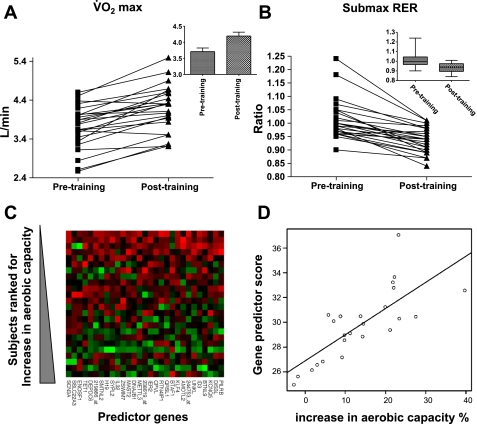Fig. 2.
A and B: aerobic capacity and substrate oxidation characteristics of young sedentary human subjects before and after 6 wk of aerobic exercise training. Maximum oxygen consumption (V̇o2max) increased 14% (P < 0.0001) and submaximal exercise respiratory exchange ratio (RER) decreased, indicating greater reliance on lipid oxidation in vivo (P < 0.0001). Insets: geometric means ± SE pre- and posttraining. C and D: molecular predictor for aerobic adaptation to exercise training in humans involving 29 Affymetrix U133 Plus 2.0 probe sets. Logit-transformed normalized probe set intensities are correlated with ml/min increase in aerobic capacity (V̇o2max). C: green indicates higher gene expression, while red indicates lower gene expression. D: linear relationship between the sum of the expression of the molecular predictor genes and changes in aerobic capacity with endurance training derived from young sedentary subjects following 6 wk of constant-load aerobic exercise training (n = 24, r2 = 0.58, P < 0.00001).

